What's the best way to reheat cookies? Yes, it is possible to restore its moisture when facing this drawback by learning these simple tricks to give you that fresh-bake taste again.
I have a sweet tooth, and there's nothing like biting soft, chewy cookies. However, the moisture in the leftover cookies dissipates over time, leaving them crumbly and stiff.
Similar things happen to muffins and other baked goods; they become stale the longer they sit outside.

We've rounded up the best ways to reheat cookies in this article.
This is a quick rundown, or you can read the step-by-step instructions further down below.
- It's possible to reheat cookies in the microwave.
- Use the oven to warm the cookies.
- Soften stiff cookies with white bread.
The big question is, what makes a cookie chewy and soft?
What are the possible ways to keep it this way? To start with, let us learn what's the reasons behind it.
Read: Ube Crinkles Cookie Recipe
Why do cookies get hard?
Like I've mentioned earlier, cookies easily get staled and stiff due to the absence of moisture over time. They will lose their softness, leaving them stiff and brittle.
Hence, the most effective way to prevent cookies from going stiff or hard is to eat them right away, from the day you baked them.
But no matter how we try, it is expected that we often end up with leftover cookies. Meaning we are left with a dilemma on how to reheat these cookies to make them soft or palatable again.
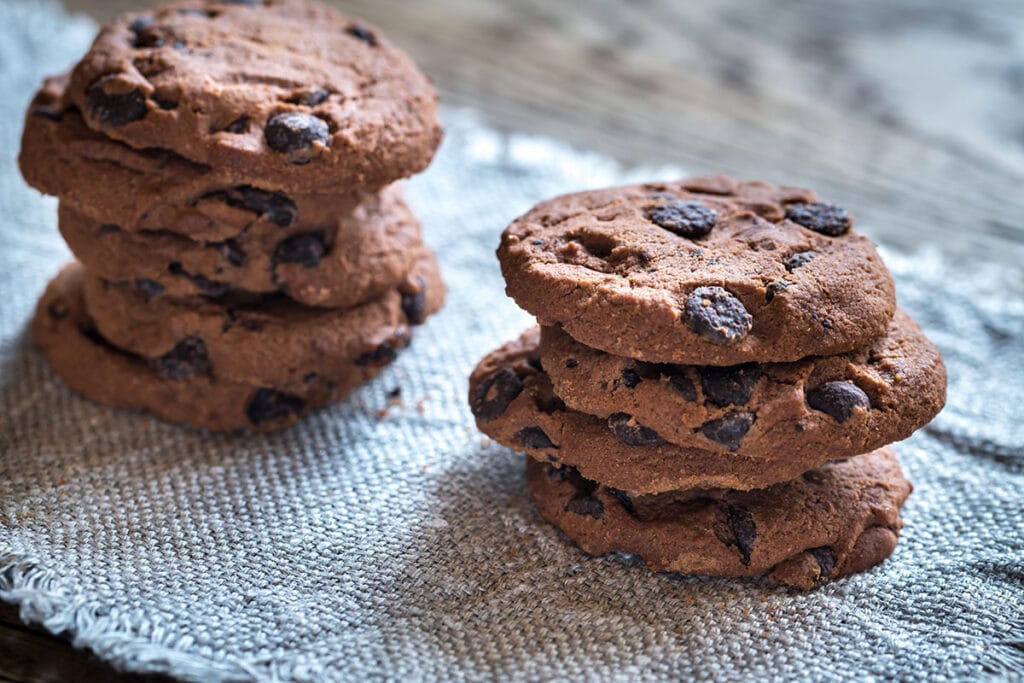
Best way to reheat cookies
Here are some simple tricks that help convert your stiff, hard cookies into soft, gooey goodness.
1 Microwave with paper towel
I believe most of us have done this trick before because it actually works if you do it rightly.
Nuking cookies in the microwave is the most effortless way to reheat them. But adding moisture is the key factor while nuking otherwise, it will yield chocolate chip hockey pucks.
Follow these steps on how to reheat cookies in the microwave:
1 Grab a paper towel and run it under the water.
2 Gently squeeze the water out until it is slightly damp, just moist enough so when you put the paper towel on top, it won't make the cookie soggy.
3 Wrap enough cookies with a damp paper towel arrange them in the center of a heat-proof plate.(For several cookies, lay a moister towel over the plate.)
4 Nuke the cookies for 10 seconds intervals or until they turn warm and soft. Check for each burst to know if the cookies are ready.
Note:
Another alternative is to put a small mug of hot water next to the microwave plate. Doing this water trick will produce a source of moisture to refresh the cookies.
How does it work?
Microwave waves work by boiling the water generating a steam cloud in the whole device. Hence, the steamy vapor penetrates the food, reviving the dough to liven it up.
2 How to Reheat Cookies in the Oven
Using the oven to reheat cookies is another alternative if you have extra time. Just take precautions not to over-bake them. Watchful eyes are necessary.
Follow these steps:
1 Reheat oven to 350°F
2 Arrange or sort your cookies on a baking sheet.
3 Warm the cookies for at least 3 to 5 minutes, but remember, the timing varies for different types of cookies. Three minutes work for me. Keep an eye while baking to ensure cookies get warmed, not burnt.
4 Once the cookies are ready, remove them immediately from the oven and serve. Be aware that we are simply warming the cookies, not re-baking them.
Reheating Frozen Chocolate Chip Cookies
How about frozen cookies? Well, it would be best if you thaw or defrost them first to room temperature before reheating.
This will take another five or more minutes, depending on how many cookies you plan on thawing. But once they are all defrosted and properly thawed, you can follow the steps mentioned above, either reheating in the microwave or the oven.
How to make stale, hard cookies soft again.
I love freshly baked cookies, but once you have some leftovers, expect them to turn stiff and crumbly after a couple of days.
You may wonder what happened? Why won't cookies just stay soft and chewy for longer than a day?
Maybe it's a result of inaccuracy in the baking process, as baking is a world of measurements.
The first thing is to identify the problem, tweak the recipe and do it again.
Consider this first
It's a natural occurrence that your cookies are cold after storing in the fridge. Consequently, they become harder and unpleasant to eat.
Before trying any tricks to reheat or soften the cookies, give them the necessary time to let them sit at room temperature. You'll be surprised to find out that your cookies may soften naturally after sitting at room temperature.
1 Tough Cookies? Soften them up with bread!
Have you ever thought that plain white bread can help revive your cookies? YEP! You heard it right. Adding a piece of fresh bread will make those stiff, crunchy cookies back to soft, chewy goodness again.
Follow these steps:
1 Position a plain white bread into the bottom of an airtight container with a lid. Ensure to use white bread so flavors won't transfer in your cookies.
2 Put or arrange the hard cookies on top of the bread.
3 Seal the container and let it sit for 24-hour and viola!! Soft, freshly baked is in your reach the next day.
How does it work?
Bread release or draw moisture in the air while the sugar ( one of the ingredients of cookies) soak up the humidity out of the air.
Note:
Never use flavored bread when using this trick. A plain white bread will work adequately and won't influence the taste of whatever is inside the sealed container.
Is no bread available? Slip in a moderate size slice of apple in place of bread. This is another method confirmed by my mom. It's the same trick.
A similar result may apply, but your cookies may pick up some apple flavor which is fine for me.
How about if, after 24-hour time, your cookies remain not as soft as you wanted to be?
1 Double-check if the bread you put is stale or old. If yes, swap the bread for a fresh one.
2 Let the sealed jar cookies sit for another 5 hours, and they should become softer.
Note:
If nothing happens after several hours, likely, your cookies are not a good candidate for rehydration. So, let's just move on.
How does this method work?
Once the moisture is absent, any cookies could quickly turn hard and crumbly. However, fresh bread contains lots of moisture, and when you add it into an airtight cookie jar, the sugar present in the cookies reacts, absorbing all the goodness from the bread's moisture.
This is why it is vital to use fresh white plain bread to achieve this trick.
2 Soften cookies in the microwave
I practically use this method if I'm in a pinch. This is a better bet than the oven. However, always take precautions when using the microwave, or you'll end up dried-up treats.
Also, this trick only works if you intend to eat the cookies immediately because the second they get cool, they'll turn into hockey pucks, stiff and drier.
Follow these steps:
1 Envelop cookies with a damp or moistened paper towel.
2 Nuke for a 10-second short burst. Always double-check if the cookies feel soft according to your liking.
3 If it's not enough softness, give another 10-second burst.
Another alternative aside from paper towel:
You can put a small mug of hot water next to the cookies and use it to create clouds of steam. The steam will add moisture to the cookies and rehydrate them further.
To further improve this hot water trick, you can drape a moist paper towel over the cookies to create more steam. Then, use a 10-second burst interval when reheating the cookies thru the microwave.
3 How to Add Moisture to Cookies with Honey
There's another trick if you want to inject moisture into your cookies. Add a splash of honey or syrup.
Here are the steps on how to do it:
1 Arrange or line the cookies in a piece of parchment paper for easy clean-up later.
2 Flip each cookie over and squirt some honey or syrup over the bottom of the cookies.
3 Let the cookies sit for about 10 to 15 minutes to suck up all the sweet goodness. Drizzling syrup or honey will incorporate a hint of moisture and flavors.
4 You can do this trick before serving the cookies, or you want to glaze off some stale treats.
Note:
This technique will amplify the sweetness and moisture on the cookies. But as a result, I speak favorably of balancing things out with a glass of milk.
What to Avoid When Trying to Soften Cookies
1 Never put cookies back in the oven. This is a typical blunder we make when softening the cookies. Regardless, you could do this with proper precautions of the temperature and timing. Re-baking essentially strips off moisture from the cookies and makes them even harder.
2 By no means microwave cookies without covering them with a damp paper towel or adding a small mug of hot water next to it. Congruent to re-baking, simply nuking them without adding moisture yields more stiff or crunchy cookies.
How to Bake Soft Cookies
One of the factors why cookies fleetly go stale or un-fresh is that you didn't bake them perfectly at the outset.
Favorably, you can step back and re-examine what went wrong to ensure that the cookies will stay soft for longer. Refinement can be done successfully with the next chewy batch by doing this.
1 Measure Your Flour the Right Way
Any excess flour can contribute to extra-dry cookies. In that case, see that you accurately measure every ingredient, mainly the flour.
Implement the use of a measuring cup and level it off instead of scooping a measuring cup willy-nilly into the bag. Alternately, use a kitchen scale to ensure the ingredients are precise according to the recipe.
If you were carried away with a bit much flour, you could offset it by adding butter or a splash of milk.

2 Use Brown Sugar Over White
Baking cookies require brown sugar rather than white sugar because they contain more significant moisture and molasses. Molasses provides chewiness to the baked cookie.

3 Add extra butter.
After baking, you will notice that there's something wrong with your butter and sugar ratio if the cookies turn out to be dry or stiff.
Most notably, if what you get is a hard, flat cookie, it should explain that you added more sugar than butter.
More inclusion of butter will yield the cookies a bit softer.
NOTE:
Using the cold, diced butter will produce partially "underbaked" cookies; hence refrain the dough from spreading out while baking.
Likewise, chilling the dough before baking can achieve an equivalent result.

4 Avoid over-mixing the dough.
If possible, handle the dough with caution. The overly handled dough can result to dry cookies. Overdeveloping the gluten is one contributing factor for moisture to be absorbed from the batter.
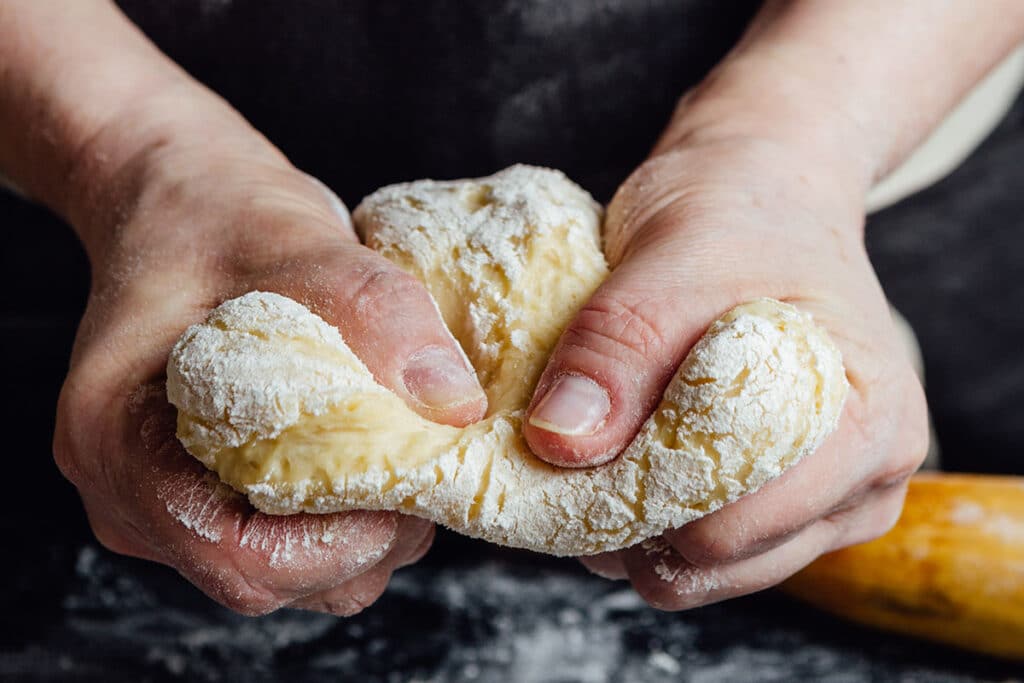
5 Scoop your cookie dough in mounds
Strive to use a scooper when baking a batch of cookies and arrange tall mounds rather than flattening them on the baking sheet.
As a result, the cookie dough will bake up with a soft center where the dough is chunkier, ergo keeping them chewy for longer.
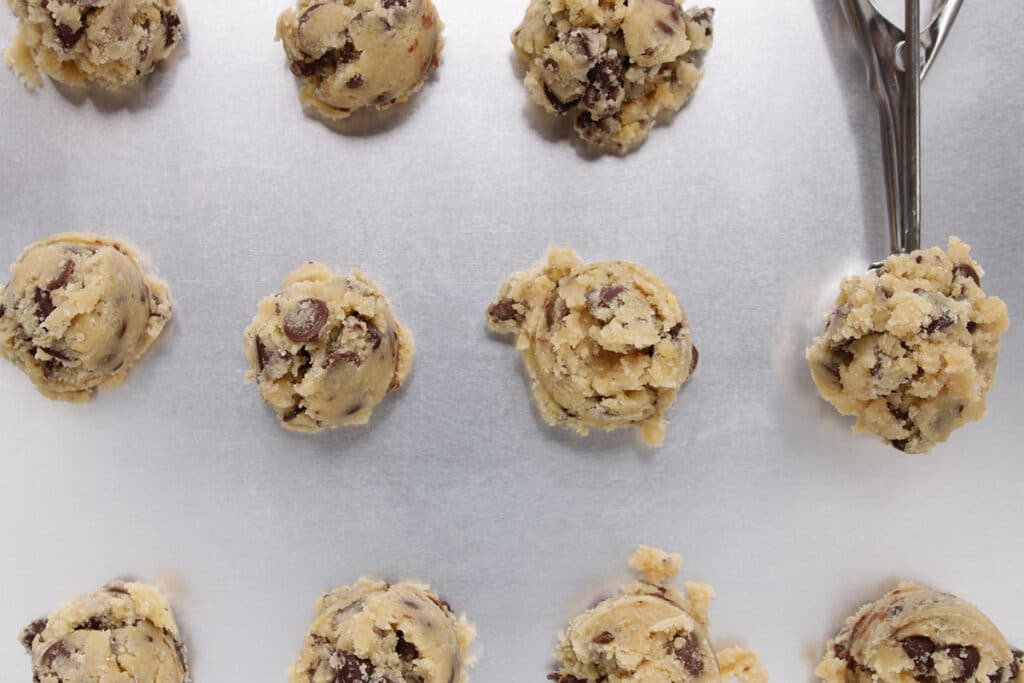
6 Use corn syrup
Before you go crackers, please understand that corn syrup (not the high fructose one) is some sort of a baking wonder. This is also known as an inverted sugar which is to say it's a liquid at room temperature.
Why does this matter, you ask? Adding just a tablespoon of corn syrup to your recipe will bring forth a crispy edge and chewy in the center.
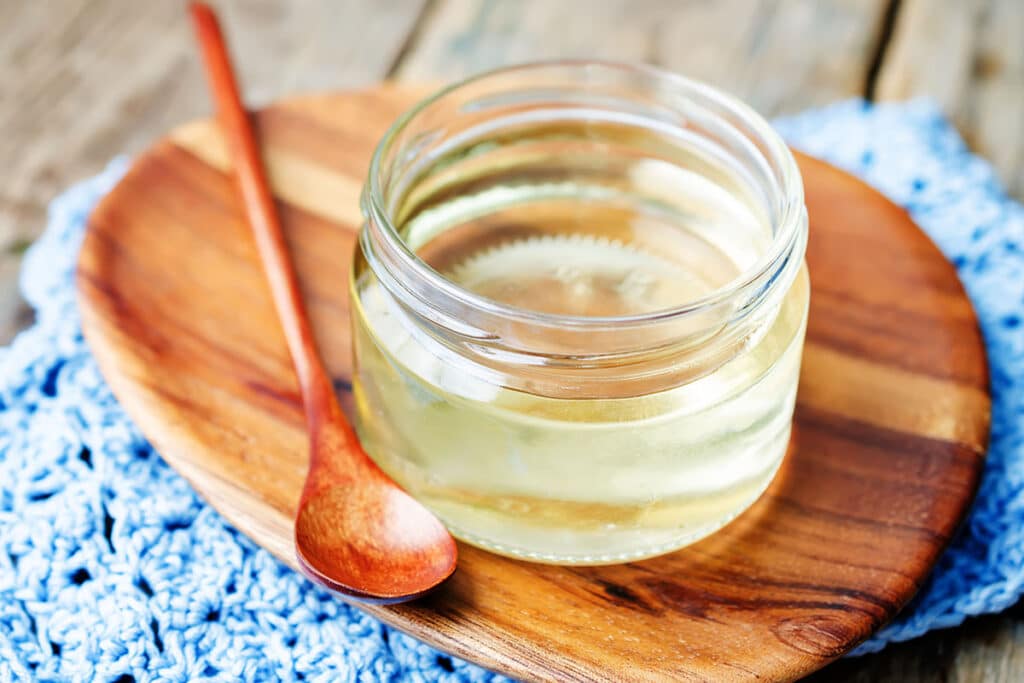
7 Keep an eye on the temperature.
Oven temperature is paramount when baking cookies because these treats are baked for a relatively reduced time, while the intricate consistency of textures is necessary.
You must be familiar with the temperature of your oven. Therefore, an oven thermometer is a god-send if you have one. Check for a steady temperature (especially for convection ovens) before putting cookies in the oven.
Turn around your cookie sheets halfway to the recommended time during the baking process. Switching from the back to the front helps to distribute heat evenly.
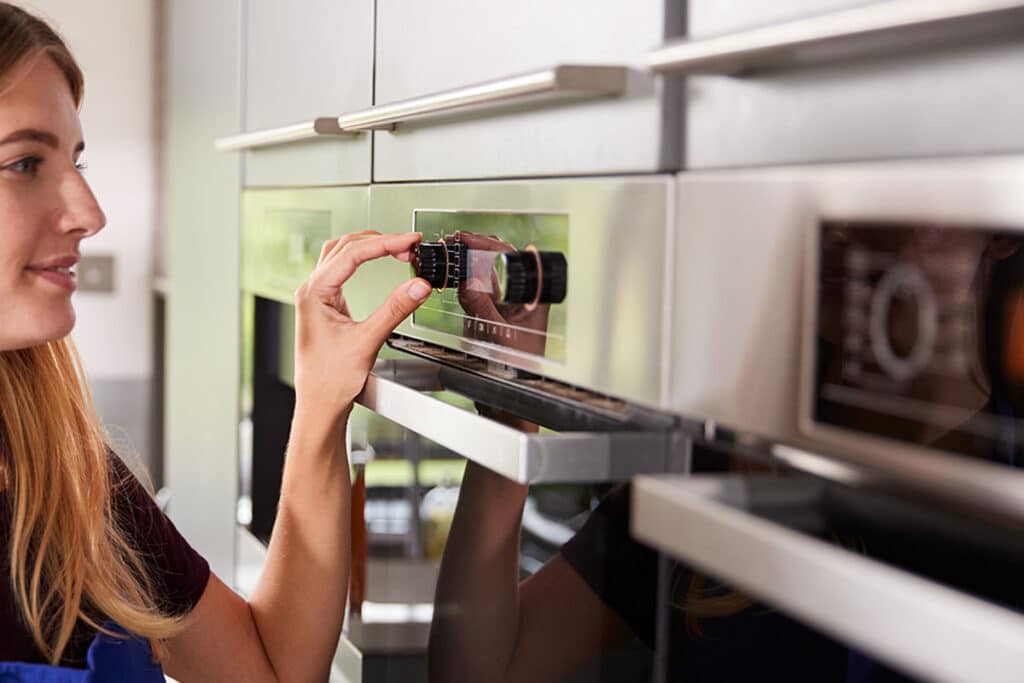
8 Egg yolks are important.
The ratio of egg yolks to egg white matters. Egg whites, being all protein, act as tougheners as they provide structure to the cookies.
On the other hand, they will stiffen the cookies if added in a large proportion. Meanwhile, yolks contain mainly fats, giving cookies more moisture and flavors.
As a matter of fact, my cookies use a 2:1 ratio of egg yolks to whites.

9 Don't over-bake your cookies
Cooking time is crucial when baking cookies, so you take them out while the centers are still squishy or soft.
I routinely use a silicone liner. I find it very functional when baking cookies as it helps prevent the dough from spreading, which is a good boon for the most part.
Monitor your cookies no later than the recommended baking time is up just about 2-3 minutes. Then, remove the cookies from the oven just before they get browned, considering they will resume to carry-over cook even out from the heat.
Keeping the cookies inside the oven will turn them crispy and stiff.

10 Let them cool
Promptly move and arrange the cookies into a cooling rack and let them sit until they cooled down. Do not allow them to rest in the hot baking sheet as they will continue cooking, consequently losing the moisture.
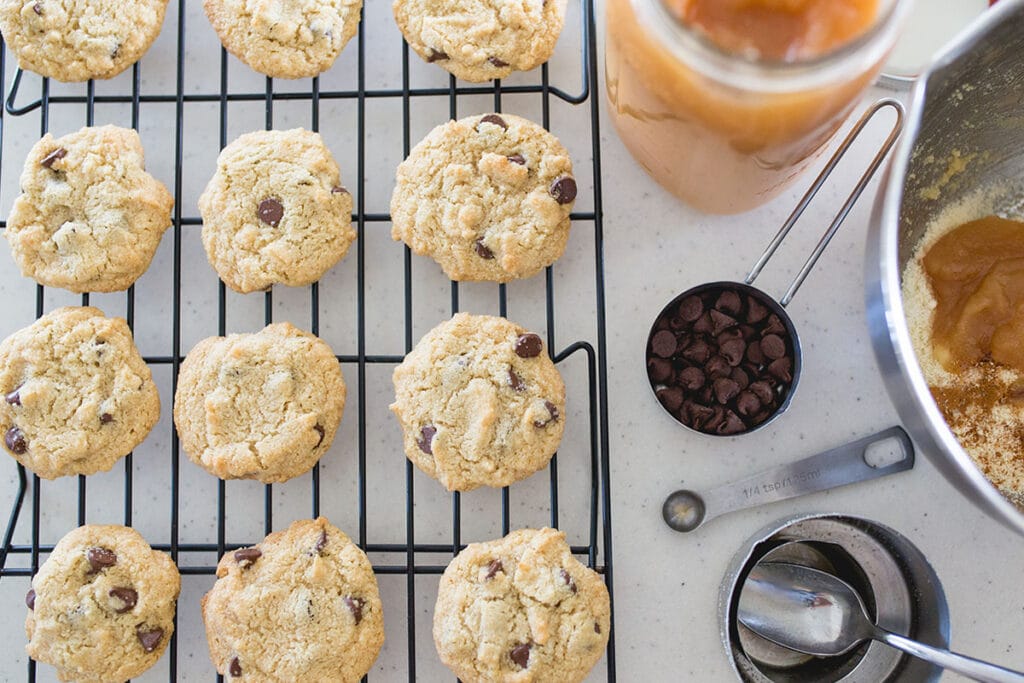
How to prevent hard cookies
My best approach in an effort not to end up with hard cookies is to bypass executing the things that cause them at the outset.
1 Be aware that cookies continue to cook, presuming they are hot even after you transfer them to a cooling rack. Try to take them out just before they're completely done.
2 Consume your cookies within a couple of days to enjoy this freshly-baked goodness. If there's no way to finish them up, you can always share them with your friends and neighbors.
How to store cookies for long-term
I typically store baked cookies in an airtight container or the freezer for prolonged storage.
This process will keep the cookies for at least 3 months without sacrificing the quality and taste.
Simply defrost or thaw them at room temperature, and after 5 or 10 minutes, they'll be back to their original form, soft and chewy.
How to do it:
1 Arrange cookies inside a ziplock bag, or you can put a parchment paper to act as a liner to prevent them from sticking with each other (optional).
2 Take as much air out as feasible from the Ziploc bag; wrap it with aluminum foil and place it in a resealable airtight, freezer-proof container.
3 Put a date and label them for quick reading and store them in the freezer.
How to store cookies for short-term
If your goal is to consume cookies straight away, you can keep them in an airtight container at room temperature.
Don't store them in the fridge as this can bring the butter or fat to coagulate or solidify, resulting in crunchy, stiff cookies.
1 Segregate crispy cookies from soft cookies, as one can influence the texture of the other. In fact, they have a contradictory effect, as soft cookies may permeate their moisture to the crunchy ones while the crumbly ones dry out the softer ones.
2 Make an effort to save your cookies in a Ziploc bag and store them in an airtight, resealable jar or container. Put the container in a cool, dry place or cupboard.
Tips on storing cookies
An additional reason why cookies get stiff or crunchy quickly is that they tend to get staled or hardened.
You can get around with this issue by storing cookies accordingly once they have cooled down.
1 Let your cookies cool down to room temperature before storing them. It's beneficial to let them cool on a rack to distribute the air around them instead of sitting on a hot sheet while cooling.
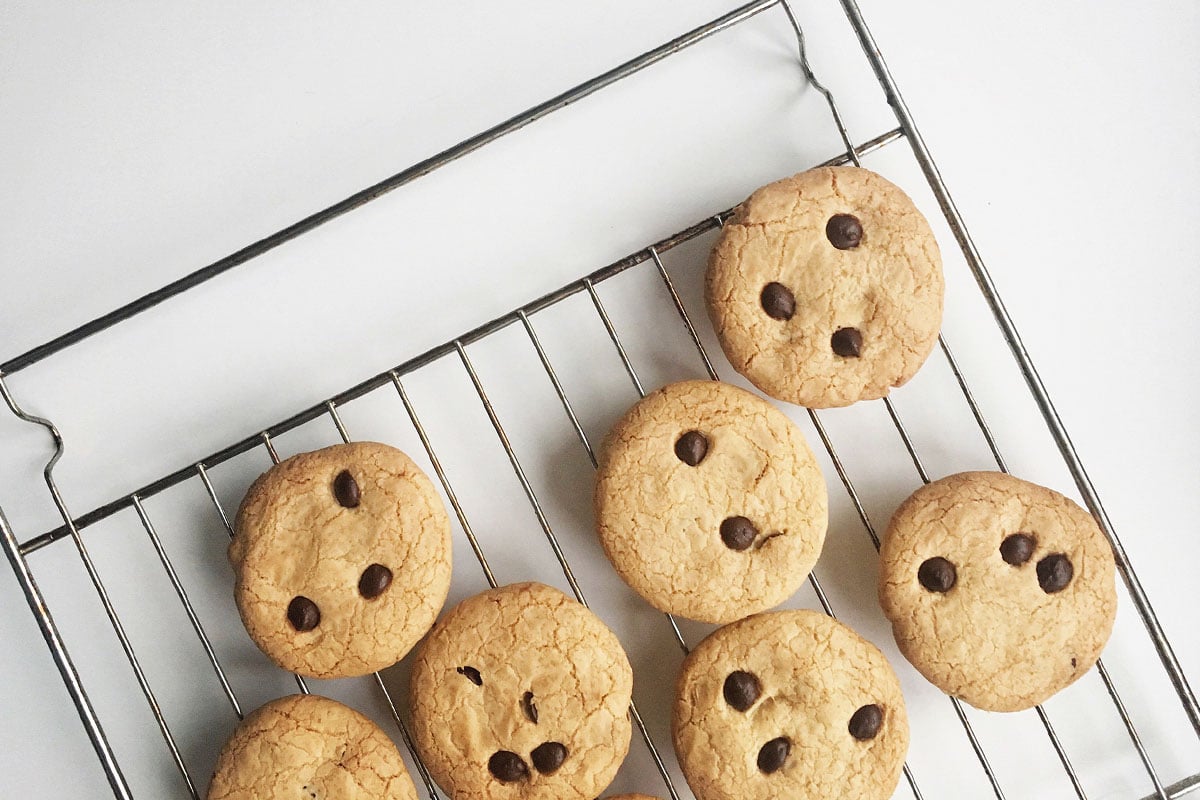
2 Sealed them up. I generally stash my cookies in a sealed Ziploc bag, then place them in an airtight container or jar to keep them extra fresh.
3 Shelf life. Freshly baked cookies serve best within three days. Cookies older than that tend to change their taste and texture.
4 Store cookies in the freezer if you expect not to consume them within three days.
5 Always shield cookies with a parchment or wax paper liner when freezing to avoid them sticking together.
6 Separate soft cookies away from hard cookies. If you do, the hard cookies will absorb the moisture from the soft cookies, which will become hard.
Related posts on how to reheat food:
FAQ / Related questions
Butter is one of the ingredients in cookie dough. Any time you expose butter to heat, it will liquefy, and once cooled down, it will solidify or harden. This is one of the main reasons why cookies come off as stiff once cooled down.
Another factor affecting cookies’ texture is the gluten formed during the mixing process. Over-handling the dough can result in hard, stiff cookies.
It is tough to finish cookies in one sitting, so having leftovers is inevitable. But the problem is leftover cookies turn crispy or stiff after 2 or 3 days.
The good news is there are ways to use up those crunchy cookies. Making a pie crust is one of them. Crumble them up and sprinkle them into your sweet treats like ice cream.
As I’ve mentioned above, the trick for soft cookies is to take them out from the oven just 3 minutes before the specified baking time. This way, they are not fully baked, but they will carry-over cook while sitting outside the oven.
In most cases, soft cookies seem hard in texture because of the higher than required temperature or baking them for so long. It is necessary to under-bake your cookies to get that soft, chewy result.
After pulling them out from the oven, always place them in a cooling rack instead of sitting in the hot baking sheets where they continue to cook briefly after being taken out.
How to Reheat Cookies (How to instructions)
Pin RecipeIngredients:
- hard cookies
Instructions:
Option #1 : Microwave with Paper Towel
- Grab a paper towel and run it under the water.
- Gently squeeze the water out until it is slightly damp, just moist enough so when you put the paper towel on top, it won’t make the cookie soggy.
- Wrap enough cookies with a damp paper towel arrange them in the center of a heat-proof plate. (For several cookies, lay a moister towel over the plate.)
- Nuke the cookies at 10 seconds intervals or until they turn warm and soft. Check for each burst to know if the cookies are ready.
Option #2 How to Reheat Cookies in the Oven
- Reheat the oven to 350°F
- Arrange or sort your cookies on a baking sheet.
- Warm the cookies for at least 3 to 5 minutes, but remember, the timing varies for different types of cookies. Three minutes work for me. Keep an eye while baking to ensure cookies get warmed, not burnt.
- Once the cookies are ready, remove them immediately from the oven and serve. Be aware that we are simply warming the cookies, not re-baking them.
Notes:
Please note that all nutrition information are just estimates. Values will vary among brands, so we encourage you to calculate these on your own for most accurate results.





